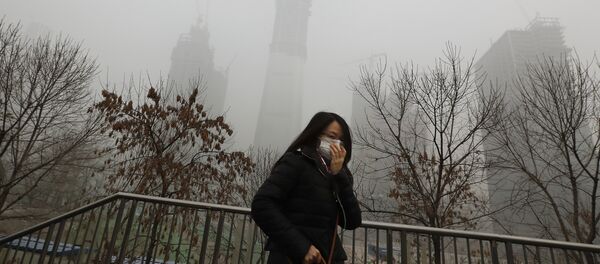On the Air Quality Index’s scale from 0 to 500, Nanjing rates a 132, which is considered unhealthy, especially for people dealing with respiratory ailments.
The towers will be designed by Italian firm Stefano Boeri Architetti, which will build two “vertical forests” with 1,100 trees and 2,500 shrubs on the structures’ rooftops and balconies.
— vamshi krishna (@8vamshi8) April 16, 2017
According to the company’s website, the project will produce "A real vertical forest that will help to regenerate local biodiversity, will provide a 25 tons of CO2 absorption each year and will produce about 60 kg of oxygen per day."
Boeri says the vertical forest is "a model for a sustainable residential building, a project for metropolitan reforestation contributing to the regeneration of the environment and urban biodiversity without the implication of expanding the city upon the territory. It is a model of vertical densification of nature within the city that operates in relation to policies for reforestation and naturalization of large urban and metropolitan borders."
There are plans for other Chinese cities to receive similar structures, including Liuzhou, Guizhou, Chongqing, Shanghai and Shijiazhuang. Boeri also has designs in Milan, with another in Lausanne, Switzerland, set to open set to open in the early part of next year.
Construction on the Nanjing Green Towers began earlier this year and should be completed by the end of 2018. A museum, a luxury hotel with 247 rooms and an architecture school will be a part of the Nanjing project.
According to architects, both towers will cover about 75,000 square feet and provide 60 kilograms of oxygen on a daily basis, though this isn’t expected to produce a considerable change in the city’s pollution levels.
When the project was announced in February, Boeri told the Guardian, "It is positive because the presence of such a large number of plants, trees and shrubs is contributing to the cleaning of the air, contributing to absorbing CO2 and producing oxygen … And what is so important is that this large presence of plants is an amazing contribution in terms of absorbing the dust produced by urban traffic."



